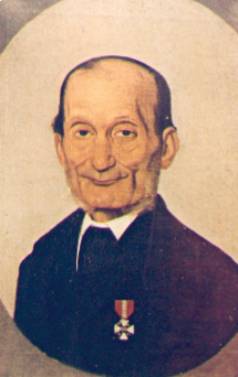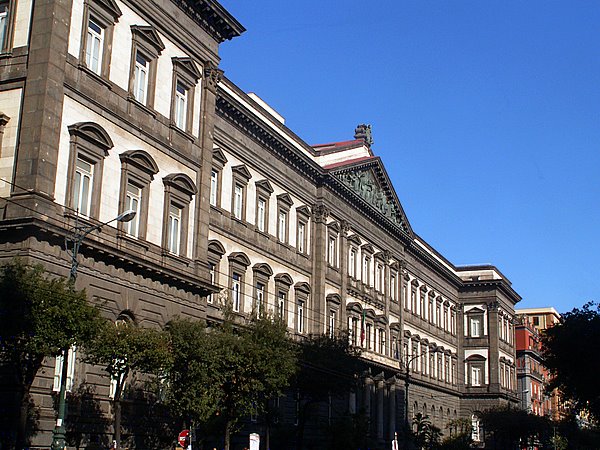- About MAA
- Membership
- MAA Publications
- Periodicals
- Blogs
- MAA Book Series
- MAA Press (an imprint of the AMS)
- MAA Notes
- MAA Reviews
- Mathematical Communication
- Information for Libraries
- Author Resources
- Advertise with MAA
- Meetings
- Competitions
- Programs
- Communities
- MAA Sections
- SIGMAA
- MAA Connect
- Students
- MAA Awards
- Awards Booklets
- Writing Awards
- Teaching Awards
- Service Awards
- Research Awards
- Lecture Awards
- Putnam Competition Individual and Team Winners
- D. E. Shaw Group AMC 8 Awards & Certificates
- Maryam Mirzakhani AMC 10 A Awards & Certificates
- Two Sigma AMC 10 B Awards & Certificates
- Jane Street AMC 12 A Awards & Certificates
- Akamai AMC 12 B Awards & Certificates
- High School Teachers
- News
You are here
Analysis and Translation of Raffaele Rubini's 1857 'Application of the Theory of Determinants: Note' - Biography of Raffaele Rubini
|
|
 |
|
Figure 5. Raffaele Rubini, public domain. |
When Raffaele Rubini died in 1890, noted algebraist Alfredo Capelli (1855-1910), who had won a chair in mathematics at the University of Naples in 1886, wrote an obituary (necrologio) of him, which appeared in the 1890-1891 Annuario scolastico della Regia Università di Napoli (Scholastic Yearbook of the University of Naples) [Capelli, 1890-1891]. Unless otherwise noted, information about Rubini in the present "Biography" came from this obituary.
Raffaele Rubini was born on October 20, 1817, to Settimio Rubini and Giuseppa Gargiulo in Brindisi, a city in southern Italy in the region of Apulia. While attending college, Rubini became a student of Professor Fortunato Padula, who exposed him to the analytic approach to mathematics. In 1844, he graduated with degrees in mathematics and architecture. He began teaching mathematics at the Collegio Militare della Nunziatella, a military school, and then in 1848 he taught at a liceo in Lecce. Due to a profound new sense of nationalism, a number of revolutions occurred in Europe in 1848, including in the Kingdom of Two Sicilies. Rubini's forthright support of the Revolution of 1848 had the adverse effect of his forced removal from his teaching position at Lecce the following year when the Bourbon king returned to power. Other analytic mathematics instructors who had supported the revolution were removed from their positions in 1849 as well. For the next ten years, Rubini taught several students privately and he also published some mathematical works, including an Italian translation of Jacobi's work, Sul Numero delle Tangenti Doppie (On the Number of Double Tangents), published in 1851 [Capelli, 1890-1891; Rubini Raffaele, n.d.].
Figure 6. The main building of the University of Naples Federico II, public domain.
Rubini began to teach formally again in 1859 as a professor of mechanics at the Regia Scuola di Marina in Naples. In 1861, he began to work at the University of Naples (now known as the University of Naples Federico II), where he continued teaching mechanics. But soon he decided to teach mathematics, including algebra courses, viewing these subjects as more conducive to his own studies. After suffering from a nervous breakdown in 1870, he returned to his native town of Brindisi to rest, but was able to maintain the title of professor at the university. He continued to work for the University of Naples until 1886, at which point he was declared an honorary professor. Rubini had several publications, which was a bit uncommon at the time for Italian mathematicians, including works on geometry, algebra (the theory of determinants), and calculus. Many of his publications were translated into Spanish by Professor Marquez y Villaroe at the University of Seville. Rubini died on May 13, 1890, in Brindisi, where a public monument was erected in his honor [Rubini Raffaele, n.d.]. There is also a street named after him in Brindisi that still exists today [Mathematica Italiana, 2008-2011].
Salvatore J. Petrilli, Jr. (Adelphi University) and Nicole Smolenski (Adelphi University), "Analysis and Translation of Raffaele Rubini's 1857 'Application of the Theory of Determinants: Note' - Biography of Raffaele Rubini," Convergence (July 2017)





